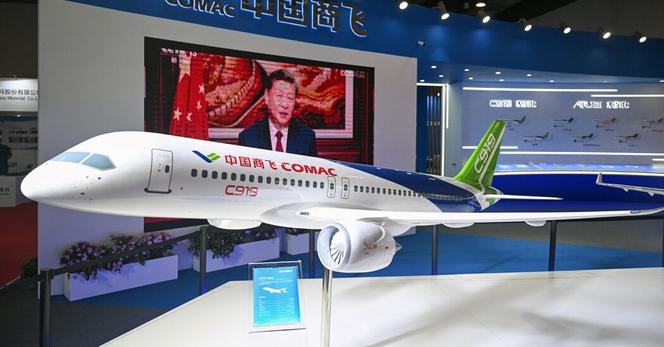Efficiency gains from engines will still be vital for the industry.
The most marked change in the appearance of #engines could be the return of the open #propeller.
The design dispenses with the #nacelle
– the cover
– to allow for a bigger fan that offers more propulsive force.
Superficially, it will look like existing turboprop engines,
but with the ability to fly at Mach 0.8, or 80% of the speed of sound
– the same as current jet engines.
#CFM, a joint-venture between America’s General Electric and France’s Safran, has said that its open fan #Rise engine could theoretically reduce fuel consumption and carbon emissions by 20%.
The company says it can reduce noise, which put paid to a previous prototype in 1986.
It will still have to persuade regulators and passengers that the engines will be safe if a blade breaks in midair.
As well as radical changes to airframes or engines, manufacturers are constantly looking for ways to salami-slice #fuel burn via small gains.
#Winglets, the curved tips of wings, were first introduced in the 1970s in response to the then oil crisis,
mimicking birds’ wings to reduce drag.
The split winglets on the 737 family since 2014 can reduce fuel burn by as much as 2% during a long journey, according to the Seattle-based manufacturer Aviation Partners.
(For plane-spotters, they double as the easiest way to distinguish a 737 from an A320.)
Birds have had millennia to evolve the ideal features for efficient flight,
so aviation designers have constantly used them for inspiration.
Airbus is experimenting with #gust #sensors on the front of the aircraft to register during turbulence,
with automatic responses from control surfaces of the wing,
similar to a bird’s constant adjustments to movements in the air.
#Concorde, which flew on only a limited number of routes, was the last passenger plane in service with a truly distinctive design.
The supersonic jet, which had swept-back, delta wings, was retired in 2003.
#Boom #Supersonic, a startup, is testing the technologies for a proposed “son of Concorde” with a similar look.
That plane would only ever be a niche service, flying 80 passengers at a time on premium routes.
But there is a possibility that Boeing and Airbus take radically different approaches to the workhorses that carry billions of passengers each year.
If the manufacturers go in different directions, then passengers might start paying serious attention to plane design, says Addison Schonland, an analyst who tracks the industry at AirInsight.
“I don’t think we’ve ever had a situation before, to look at an aeroplane and say, ‘that’s completely different’,” he says.
“How will people react to seeing those novel shapes?”
(3/3)
#Airbus #JetZero #Delft #University #McKinsey #fuel #efficiency #Boeing #truss #transonic





